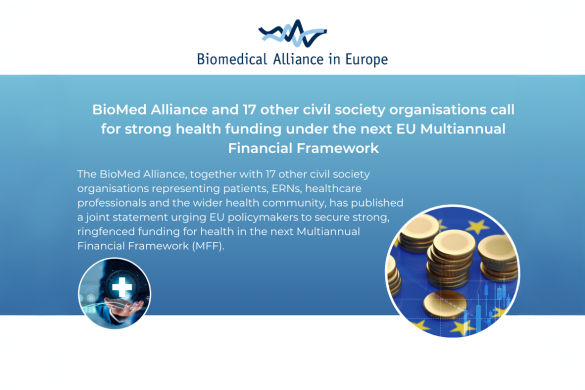
by Elena Moro
For December 2016 we have selected: Gonzales-Bermejo J, Morélot-Panzini C, Tanguy M-L, et al. Early diaphragm pacing in patients with amyotrophic lateral sclerosis (RespiStimALS): a randomized controlled triple-blind trial. Lancet Neurol 2016:15;1217-1227.
The main cause of death in patients with amyotrophic lateral sclerosis (ALS) is related to respiratory failure. It has been hypothesized that diaphragm pacing (a technique that induces diaphragm contraction through the stimulation of the phrenic nerve) could slow the progression of respiratory muscle weakness, and increase alveolar ventilation and lung compliance in ALS patients. Few previous uncontrolled studies had reported a probable benefit from diaphragm pacing in ALS. However, a more recent open controlled trial (the DiPALS study) has not only failed in showing any positive effects, but found a shorter survival in patients with diaphragm pacing and non-invasive ventilation compared to the group with only non-invasive ventilation.
The impact of diaphragm pacing on slowing diaphragm deterioration in ALS patients without non-invasive ventilation was assessed in this French multicenter, randomized, parallel group, triple-blind control trial (RespiStimALS). Between September 2012 and July 2015 twelve French centers included 74 patients with probable or definite ALS, sitting forced vital capacity (FVC) between 60% and 80% predicted (moderate respiratory involvement), and documented response to diagnostic phrenic nerve stimulation. All patients were laparoscopically implanted with intradiaphragmatic electrodes (NeuroRxRA/4, Synapse Biomedical, Cincinnati, OH), and randomly assigned to receive active or sham stimulation through an active or non-active cable, respectively, connected to an external stimulator. Patients, investigators, care-givers, and an independent treatment allocation committee for non-invasive ventilation were blinded to the study treatment. Phrenic stimulation was delivered following a standardized protocol and adapted according to the onset of side effects. During chronic stimulation patients were using diaphragm pacing within one session of 3 hours per day. Patients were regularly followed every 3 months, including assessments for possible indications for non-invasive ventilation. If non-invasive ventilation was started, treatment was unmasked and patients switched to active stimulation if previously with sham. The main outcome was the non-invasive ventilation-free survival time, calculated from the date of randomization to non-invasive ventilation introduction or death. All 74 patients were included in the intention-to-treat analysis. Survival estimates were calculated using the Kaplan-Meier method.
The negative results of the DiPALS study were published in July 2015. Since at that time the RespiStimALS was still ongoing, the study’s legal sponsor asked for a formal unplanned masked interim survival analysis. This analysis showed a significant difference for overall mortality between groups, and the study was stopped. The unmasked analysis confirmed higher mortality in the active stimulation group. The median non-invasive ventilation-free survival was 6.0 months (95% CI 3.6-8.7) in the active stimulation group, and 8.8 months (4.2 – not reached) in the sham group (HR 1.96; 95% CI 1.08-3.56; p=0.02). Twenty-three patients in the active group had non-invasive ventilation, whereas 20 in the sham group. In overall survival there was a significant difference between groups, with 18 deaths in the active group and seven in the sham group (HR 3.14, 95% CI 1.31-7.53). Serious adverse events (pneumothorax, acute respiratory failure, venous thromboembolism, gastrostomy) were frequent in both groups.
“The most important findings of this study are that not only early diaphragm pacing does not postpone the use of non-invasive ventilation in ALS patients but it also has negative effects on survival”, says Prof. Philippe Couratier, Division of Neurology, University of Limoges, France, who actively participated to the study. “Indeed, our results confirmed the open-label DiPALS findings, although their patients had a more advanced disease. Both studies’ results are in contrast with the previous findings that allowed the FDA to approve indication for diaphragm pacing in ALS patients (humanitarian device exemption), and thus support the need to re-examine this decision. Moreover, estimates of monthly changes of FVC and respiratory muscle strength variables during follow-up were significantly higher in the active stimulation group, further supporting the direct negative impact of the diaphragm pacing.”
“There was no accelerated deterioration after surgery in patients with sham stimulation. This finding rules out a putative accelerating effects of surgery in ALS patients, as suggested by some authors”, says Prof. Philippe Corcia, Centre de Ressources et de Compétences SLA, University of Tours, France. “While the negative effects of phrenic stimulation are clinically obvious, the mechanisms of its action are unknown. A better understanding of this kind of stimulation would not only avoid harmful consequences but help to find other more successful solutions.”
The other nominees for the December 2016 Paper of the month are:
- Hanley DF, Thompson RE, Muschelli J, et al, for the MISTIE Investigators. Safety and efficacy of minimally invasive surgery plus alteplase in intracerebral haemorrhage evacuation (MISTIE): a randomized, controlled, open-label, phase 2 trial. Lancet Neurol 2016;15:1228-1237. Ninety-six patients with a spontaneous intracerebral haemorrhage of 20ml or higher were randomized to receive standard medical care (54 patients) or image-guided minimally invasive surgery (MIS) followed by alteplase irrigation to remove clots (42 patients). There was no difference between groups in safety outcomes (30-day mortality, 7-day procedure-related mortality, 72-hour symptomatic bleeding, and 30-day brain infections). However, asymptomatic bleedings were more frequent in the MIS plus alteplase group.
- Powers SW, Coffey CS, Chamberlin LA, et al., for the CHAMP Investigators. Trial of amitriptyline, topiramate, and placebo for pediatric migraine. N Engl J Med October 27, 2016. DOI: 10.1056/NEJMoa1610384. This randomized, double-blind, placebo-controlled trial was designed to investigate the effectiveness of amitriptyline and topiramate of preventing migraine in children and adolescents within a 24-week trial. The trial was closed early for futility since no difference in the primary outcome was found between groups. Patients receiving amitriptyline (132) and topiramate (130) had higher rate of adverse events compared to placebo (66).









